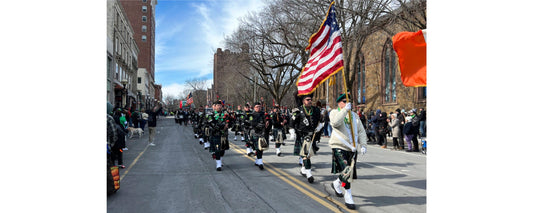33 winters ago, in a rear-wheel-drive Toyota, on the side of a mountain in Taos, New Mexico…
“I’d be working all day, doing my carpentry stuff, building adobe homes, doing my whole thing. Then it’d be time to go home.
“Snowpack was at 8,500 feet. The house was at 89. There was so much snow. You’d drive up that road—and it was a bad road. Switchbacks. Big-time mountain road—and you’d come around this righthand turn. And now you had to make a hard lefthand turn through these two big stone pillars—and not clip the pillar—and then make a hard right turn and make your way up the driveway—and not lose momentum or traction.
“I’d do the whole right-left-right thing and I’d be plowing my way up and eventually I’d just [sputtering swerving noise]. But I couldn’t leave the car there. So I’d back all the way down the driveway, onto the most dangerous road in New Mexico. I’d back down that road, and then fire it up, and I’d charge back up, and I’d just punch my way through the snow, each time going another 50 feet, another 50 feet, until I got to the cabin.”
Fair Havener Robert Fecke has lots of good stories to tell—about sailing the Caribbean for a year with his brother; then becoming a “nautical hitchhiker;” then kayaking around New Zealand for six months, for starters—and more than one way to tell them. Sometimes he does it the way most of us do, with vibrating air passing through larynx and mouth. Then there’s the other way: with antique wood passing through various contraptions in his 20,000-square-foot sawmill.
Reclaimed lumber is his business, and Reclamation Lumber is that business’s name. From storied industrial sites he gets douglas fir, yellow pine and spruce, and from old agrarian buildings come chestnut, oak, pine and hemlock. It’s historic, lived-in wood, which is partly what makes it so valuable. But only in the right hands. “All this material is rough” to start, he says. “It’s got iron in it. It’s got conduits still hanging off of it. It’s got myriad site conditions that have to be dealt with… You have to de-nail it. It has to be cleaned. It has to be re-dried. And then we can start to rework it.”
That reworking, or “match work,” as Fecke terms it, is crucial. Once a piece finishes drying in the kiln, “it has attitude. It’s cupped. It’s twisted. You have to flatten it. You have to straighten it… So what I’ve set up here is a re-saw breakdown facility—to take this big raw heavy material out of these demolition sites and make it useable again.” The people who do the subsequent using range from specialty cabinet-makers to general contractors, installing it as flooring, wall board, beams, cabinetry and more, mostly in higher-end homes. Through it all, the wood retains the color, density and growth patterns of the very old—often virgin-growth—timber, plus the weathering, checking, nail holes and whatever “surface character it obtained in its prior usage.”
The long, high-ceilinged, metal-roofed facility Fecke and his five-man crew use to do their work, located on Grand Avenue just past the eastern bank of the Mill River, is itself reclaimed. Flush with exposed brick and huge fiberglass-shielded windows that convert direct sunlight into a pleasant warm glow, it was once the trolley garage where the Fair Haven line’s iconic rumblers would go for maintenance and repair. Now it’s filled with tall stacks of boards and beams; copious piping and crinkled vacuum tubes and specialized machinery; plus a trolley-sized boat Fecke is renovating in his spare time.
The boat has special meaning to Fecke and a special place at Reclamation Lumber. For one thing, it was a joint project with his brother. For another, it’s the reason Reclamation Lumber even exists.
While still living in Taos, Fecke, who grew up in Cheshire and still had family in Connecticut, would come to the shoreline each spring to prep the boat for sailing season. He’d then take it around for a couple of weeks before heading back west.
But the 1997 trip was different. Branching out from his longtime occupation as a “journeyman carpenter,” he was by then running a lumber business back in Taos. That put him onto the scent of salvage lumber here in Connecticut, a much older and woodier state than New Mexico, with more aged construction. By chance, he heard that the original drying shed of New Haven’s Winchester Repeating Arms factory, where the company’s wooden rifle stocks were once finished, was up for grabs. Blonder then, and with a long ponytail—he showed me pictures—Fecke reached a deal with Winchester and got to work. “I grabbed a bunch of guys off the streets of Newhallville, and we tore the building down. I sold it to a developer in Litchfield—14 tractor-trailer loads of timber. And that was the start of it.”
He made a very healthy profit on that first deal, but that was before Reclamation was an actual business. “When you do something as a first one-off, and you have no overhead, and you have no insurance, and it’s all sort of a risk at a certain level, the profit can be quite good because you’re not incurring the costs that an established business has,” he notes. And that first deal was long before the 2008 economic crash, which would cost Fecke his property in Taos—he’d offered it as collateral in 2006, to secure an expansion loan for Reclamation—and would almost sink his entire company.
Of course, it didn’t. “We were able to stabilize the business, and hold on for several years,” he says, “and slowly we’ve been working our way back to solid ground.” 33 years on, he’s once again willing his way uphill, determined to make it work.
Reclamation Lumber
424 Grand Ave, New Haven (map)
Welcomes visitors by appointment.
(203) 752-1204
www.reclamationlumber.com
Written and photographed by Dan Mims. To see additional photos, check out the email version.







